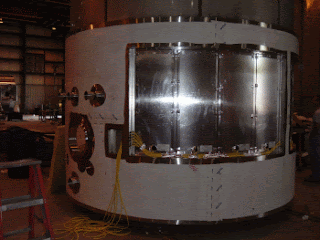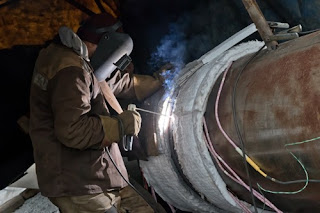 |
| Epoxy laminated panel heater installation. |
If you’re looking for an excellent external tank heating solution you may want to consider epoxy laminated panel heaters (ELPs). The heaters provide a low watt density heating profile, and along with their inherent low mass, ELPs provide excellent thermodynamic performance.
These electric heating panels use a flat foil resistive element laminated in a multi-layer fiberglass “sandwich” using epoxy resin. Manufactured under tightly controlled heat and pressure to assure bonding and structural integrity, the resulting heater is a water-proof and durable semi-flexible heating panel.
Epoxy laminated panels are used in a variety of applications, from freeze protection to process heating. They are used on either vertical or horizontal metallic or non-metallic tanks with diameters of 48" and above. They are also applied in dry or wet areas, corrosive environments, and carry FM approval for hazardous area use.
No special tools or skills are required, so they are quick and easy to install. Typically the ELPs are installed by banding them to the tank with metal bands or polyester straps, taking just a few minutes. After installation, adhesive aluminum tape should be applied to the edges of the heaters to act as a seal, preventing thermal insulation becoming trapped between the heating panels and the tank.
For more information contact:
HotfoilEHS
2960 East State Street Ext.
Hamilton, NJ 08619
Phone # 609.588.0900
Fax # 609.588.8333
www.hotfoilehs.com
Email: dap@hotfoilehs.com










